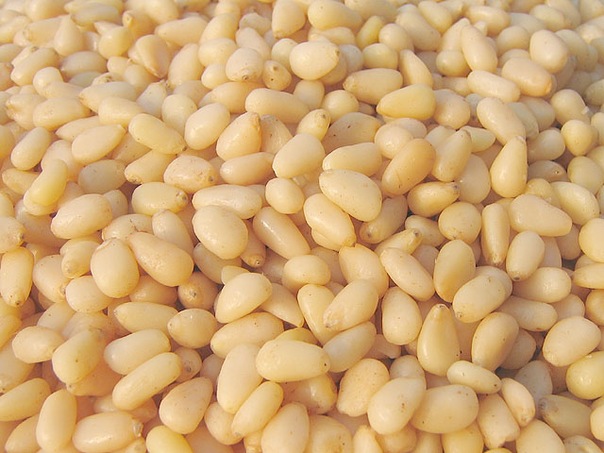Pine nuts have a long history of being consumed for their wholesome goodness. The American Indians consumed these nuts to gain weight and energy for the long cold winters. The Indians used the nut for trading for their needs and are deeply embedded into their history since the 16th century. Even today these are still a staple of eating for many Indians based on century old ideas.
Pine nuts are not a common thing that many know or hear about. They are gaining in popularity now that more nutritional information is available. Many stores now carry these nuts in toasted and flavored form, leaving the consumer in an advantage to try something new and different. Knowing and understanding this seed type nut may be the swing factor that will entice you to try them next.

This nut is actually a white colored seed from a pine cone with each one measuring up to a half an inch in length. When the seed is in its natural state it is somewhat soft and has a sweet buttery taste to it. These nuts are either lightly toasted or sun dried to add a crunchy texture and light overall flavor to them. It can take a pine tree up to 25 years to produce this nut, though most produce them within the first 15 years or so. It is known for the pine tree to take up to 45 years to achieve full production of this unique pine seed.
The cost factor of pine nuts are slightly higher than most consumers are willing to pay. A large portion of these nuts are harvested from the different kinds of wild pine trees. Each nut is harvested by hand, adding a major cost to what you sometimes see in natural health stores and other retail outlets. The most famous American pine nut variations are the Mexican Pinon and the Colorado Pinon with two other foreign producers, the Chinese Nut Pine and the Italian Stone Pine. These four trees from are the main source of production for the entire world even though many other types exist.
Pine nuts are known by many names around the world. The most common of names is the Italian version called “Pesto”, which means “to grind”. Pesto is a type of sauce that originated in northern Italy for sauce on many pasta dishes. Pesto is derived from the smaller pine nut as mostly the larger nut is consumed as a snack.
As with many nuts, this one has as many, if not more, nutritional value then most nuts have. A major factor is that this nut is gluten free and perfect for anyone who is allergic to wheat. People that incur Celiac disease, a loss of the lining of the small intestine, eat pine nuts to help absorb part of the foods they consume.
Other benefits of this unique nut are vitamin E, a powerful antioxidant. Also within this nut are the poly-unsaturated fatty acids which lower the LDL cholesterol, the bad kind. Mono-unsaturated fats are also with this nut, which raises the good cholesterol within the body helping reduce strokes, heart attacks and many other cardiovascular diseases. Other important contents include manganese, which this nut contains the highest levels of out of all the nuts available. Manganese helps against infection and inflammation within the body.
Pine nuts are also a source of pine nut oil. This oil is used in many medicinal applications and has been for thousands of years. The oil also is used in today’s aromatherapy and also for massage oils as it leaves a dry feel behind when done. Many times the pine nuts are also used in cosmetics as an oil base to apply to the skin.
There are literally hundreds of uses for pine nuts other than just snacking. There are many advantages of how and where to use this unique seed. Eating this nut is a unique experience that many enjoy. Hopefully along the way one finds a way to try these nuts and find out the advantages to which they may work best for your health and wellbeing.
Larry Holmes spends most of his day walking around his local forest.
What Pine Nuts Can Do For You

